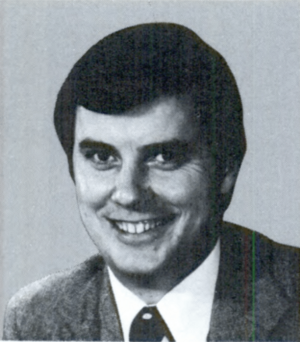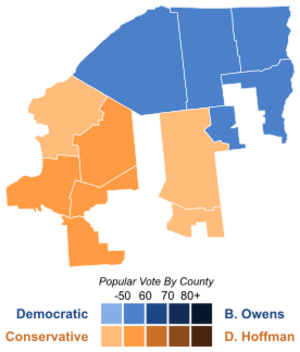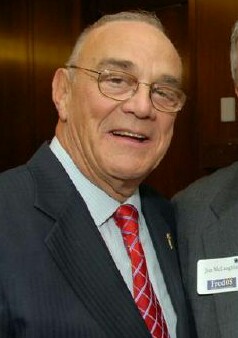Conservative Party of New York State facts for kids
Quick facts for kids
Conservative Party of New York State
|
|
|---|---|
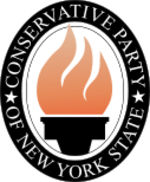 |
|
| Chairman | Gerard Kassar |
| Founded | 1962 |
| Headquarters | Brooklyn, New York, U.S. |
| Membership (November 2022) | |
| Ideology | Conservatism |
| Political position | Right-wing |
| Colors | Orange Navy blue |
The Conservative Party of New York State is an American political party. It was started in 1962 because some people felt the Republican Party in New York was becoming too liberal.
A big moment for the party was in 1970. James L. Buckley won a seat in the U.S. Senate while running only as a Conservative Party candidate. He served one term.
Since 2010, the Conservative Party has been listed as "Row C" on New York election ballots. This means it's usually the third party listed, right after the Democratic and Republican parties. They earned this spot by getting the third-highest number of votes in the New York governor elections in 2010, 2014, 2018, and 2022. The party is known for trying to make the Republican Party more conservative.
| Top - 0-9 A B C D E F G H I J K L M N O P Q R S T U V W X Y Z |
How the Party Started and Grew
The Conservative Party of New York State was founded in 1962. A group of people, including J. Daniel Mahoney and Charles Edison, were unhappy with how liberal they thought the state's Republican Party had become.
New York has a special voting system called "fusion voting." This allows a candidate to appear on the ballot under more than one party's name. The Liberal Party of New York, which started in 1944, had used this system to gain influence. The Conservative Party wanted to do the same to balance out the Liberal Party's power.
The party's early supporters were often working-class people from cities and suburbs, many of whom were Catholic. They were sometimes called "Reagan Democrats" later on.
Party Leaders Over Time
The Conservative Party has had several leaders, called Chairmen, since it began:
| Chair | Years Served | Home Town |
|---|---|---|
| Kieran O'Doherty | February–July 1962 | Manhattan |
| J. Daniel Mahoney | July 1962 – April 1986 | Manhattan |
| Serphin Maltese | April 1986 – December 1988 | Queens |
| Michael R. Long | December 1988 – January 2019 | Brooklyn |
| Gerard Kassar | February 2019 – present | Brooklyn |
Important Moments in the 1960s
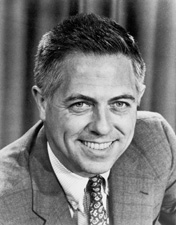
In 1965, a well-known writer named William F. Buckley Jr. ran for Mayor of New York City as a Conservative Party candidate. He received 13.4% of the votes. This campaign brought a lot of attention to the Conservative Party and showed its strength in New York City.
In 1966, Conservative candidate Paul L. Adams ran for Governor of New York. He received over half a million votes. This helped the party secure "Row C" on the ballot for the first time.
Important Moments in the 1970s
In 1970, James L. Buckley, William F. Buckley Jr.'s brother, ran for U.S. Senate. He ran only on the Conservative Party line and won with 39% of the vote. Buckley served one term in the Senate. His victory showed how people who were tired of high taxes and government spending could come together.
In 1976, Buckley ran for re-election. This time, he was supported by both the Republican and Conservative parties, but he lost.
In 1978, William Carney, a Conservative Party member, was elected to the United States House of Representatives. He represented a district on Long Island that had usually voted Democratic. He served four terms.
Important Moments in the 1980s
In 1980, the Conservative Party supported Al D'Amato in his U.S. Senate race. D'Amato won, and the votes he received on the Conservative Party line were more than his small winning difference. This showed how important the Conservative Party's support could be.
In the 1982 and 1986 elections for governor, the party supported Republican candidates who were defeated by Democrat Mario Cuomo.
Important Moments in the 1990s
In the 1990 governor's election, the Conservative Party chose its own candidate, Herbert London, instead of the Republican candidate. They did this because they felt the Republican candidate was too liberal and not serious enough. London ran a strong campaign.
The party did not support Rudy Giuliani when he ran for Mayor of New York City in 1993 and 1997. This was because Giuliani also accepted support from the Liberal Party.
However, the party did support Republican George Pataki in his successful 1994 campaign for governor. Pataki received over 300,000 votes on the Conservative line, which was double his winning margin.
Important Moments in the 2000s
The Conservative Party ran its own candidates for Mayor of New York City in 2001, 2005, and 2009. They did not support the successful Republican candidate, Michael Bloomberg.
In the 2006 U.S. Senate election, the party supported John Spencer, who ran against Hillary Clinton. Spencer was defeated.
In the 2006 governor's race, the party supported John Faso, who was also the Republican candidate. Faso lost to Eliot Spitzer.
In a special election in New York's 23rd congressional district in 2009, the Conservative Party supported Doug Hoffman. They chose him because they felt the Republican Party's candidate was too liberal. Hoffman lost the election, but the race gained national attention. It was seen as a debate about the direction of the Republican Party.
Important Moments in the 2010s
In the 2010 New York gubernatorial election, the party first supported Rick Lazio. However, after Lazio lost the Republican primary, the Conservative Party decided to support Carl Paladino. Paladino lost the general election, but he received enough votes on the Conservative Party line (232,264 votes) for the party to regain "Row C" on the ballot. They have held this position ever since.
Before a law about marriage was passed in 2011, the party stated it would not support any candidate who voted for it. Some Republican state senators who voted for the law faced challengers supported by the Conservative Party in 2012 and 2014. This sometimes led to those senators losing their elections.

In 2016, the Conservative Party supported Donald Trump for President of the United States, who went on to win the election.
In 2018, the party chose Marcus Molinaro as its candidate for governor. They specifically did not consider other candidates they felt were too liberal.
In January 2019, Michael Long retired as the party chairman after 30 years. Gerard Kassar became the new chairman in February 2019.
Important Moments in the 2020s
In 2020, the Conservative Party again supported Donald Trump for president, but he was defeated. In 2021, the party worked with the Republican Party to oppose and defeat three ballot proposals in New York State.
During the 2022 New York gubernatorial election, the party supported Republican Lee Zeldin. He had the best performance for a Republican governor candidate since 1970, though he still lost to Kathy Hochul.
In 2024, the Conservative Party nominated Donald Trump for President of the United States.
The party also ran its own candidates for Mayor of New York City in 2021 and 2025. In 2024, Gonzalo Duran, a Vice Chairman of the Bronx Conservative Party, sought to run for mayor. He later ran for Public Advocate of New York City, becoming the first Conservative candidate in a long time to get support from another party in a city-wide race.
Party Goals and Influence
The Conservative Party is known for trying to push the Republican Party in New York to be more conservative. They often support the same candidates as the Republican Party and campaign against Democratic candidates.
However, the party will sometimes refuse to support Republican candidates if they think those candidates are too liberal. For example, they did not support Rudy Giuliani for Mayor of New York City in the 1990s because he also accepted support from the Liberal Party. In 2004, the party supported a different candidate in a U.S. Senate election instead of the Republican candidate. This decision helped a Democrat win that race.
The party has also supported some Democratic candidates in the past. These include former Buffalo Mayor Jimmy Griffin and other state and federal lawmakers.
People Who Held Office from the Conservative Party
Federal Office
- James L. Buckley, Senator, 1971–1977
- William Carney, U.S. Congressman, 1979–1987
State Office
- Rosemary R. Gunning, Assemblywoman, 1969–1976
- Charles A. Jerabek, Assemblyman, 1969–1972
- Angela Wozniak, Assemblywoman, 2015–2016
- Joseph Lorigo, New York State Supreme Court justice, 2023–present
|


